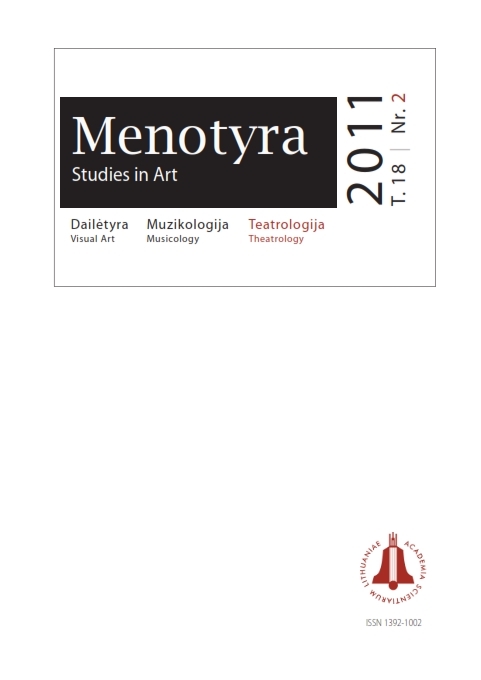Kontekstualizavimo „čia ir dabar“ eksperimentai: M. Gorkio pjesės „Dugne“ pastatymai Oslo National Theatret ir Vilniaus miesto teatre OKT
Re-creation of the identity of the performance: “Lower Depths” by Maxim Gorky in Oslo National Theatret and OKT-Vilnius Town Theatre
Author(s): Ramunė MarcinkevičiūtėSubject(s): Theatre, Dance, Performing Arts, Comparative Study of Literature, Lithuanian Literature, Russian Literature
Published by: Lietuvos mokslų akademijos leidykla
Keywords: Maxim Gorky; Oskaras Koršunovas; “Lower Depths”; interpretation; repetition; reactualisation; contextualisation; fragment; montage; adventures
Summary/Abstract: The article compares and analyses two productions of the director Oskaras Koršunovas, basedon the play of Maxim Gorky “Lower Depths”, produced in Oslo National Theatret (2009) andOKT-Vilnius City Theatre (2010). This director tends to come back to the same play in differentcontexts of artistic and socio-cultural praxis (“Way to Damascus” by August Strindberg in OsloNational Theatret (2006) and in Klaipėda Drama Theatre (2007); “The Taming of the Shrewd”by William Shakespeare in Comédie-Française, (2007) and in the State Alexandra Theatre inSaint Petersburg (2010).The Norwegian and Lithuanian versions of “Lower Depths” are similar to the experience,when in 2003 Koršunovas produced “Winter” by Jon Fosse in Oslo National Theatret, and after three years created a chamber opera by Gintaras Sodeika “Vinter” (OKT-Vilnius City Theatre).The texts of Fosse and Gorky were repeated providing the productions with a new and bright discourse of the artistic experiment, as well as producing them in different spaces: “Vinter” was transformed to the Saint Catherine Church in Vilnius, and “Lower Depths” in a small studio of OKT. The drama of Fosse assumed the form of a chamber opera, and the four acts play of Gorky – the performance in one part.The Norwegian interpretation of Gorky is closer to the traditional theatrical model, and shows the aim of the director to reveal the cultural universality of the classical text. The Lithuanian interpretation was encouraged by the social situation of the contemporary Lithuania, as well as by the actors and the audience: Gorky is presented as the contemporary playwright; the director introduces fragments of “Hamlet” by William Shakespeare, re-crating and dissolving the artistic identities of his earlier performances.
Journal: Menotyra
- Issue Year: 18/2011
- Issue No: 2
- Page Range: 110-121
- Page Count: 12
- Language: Lithuanian

